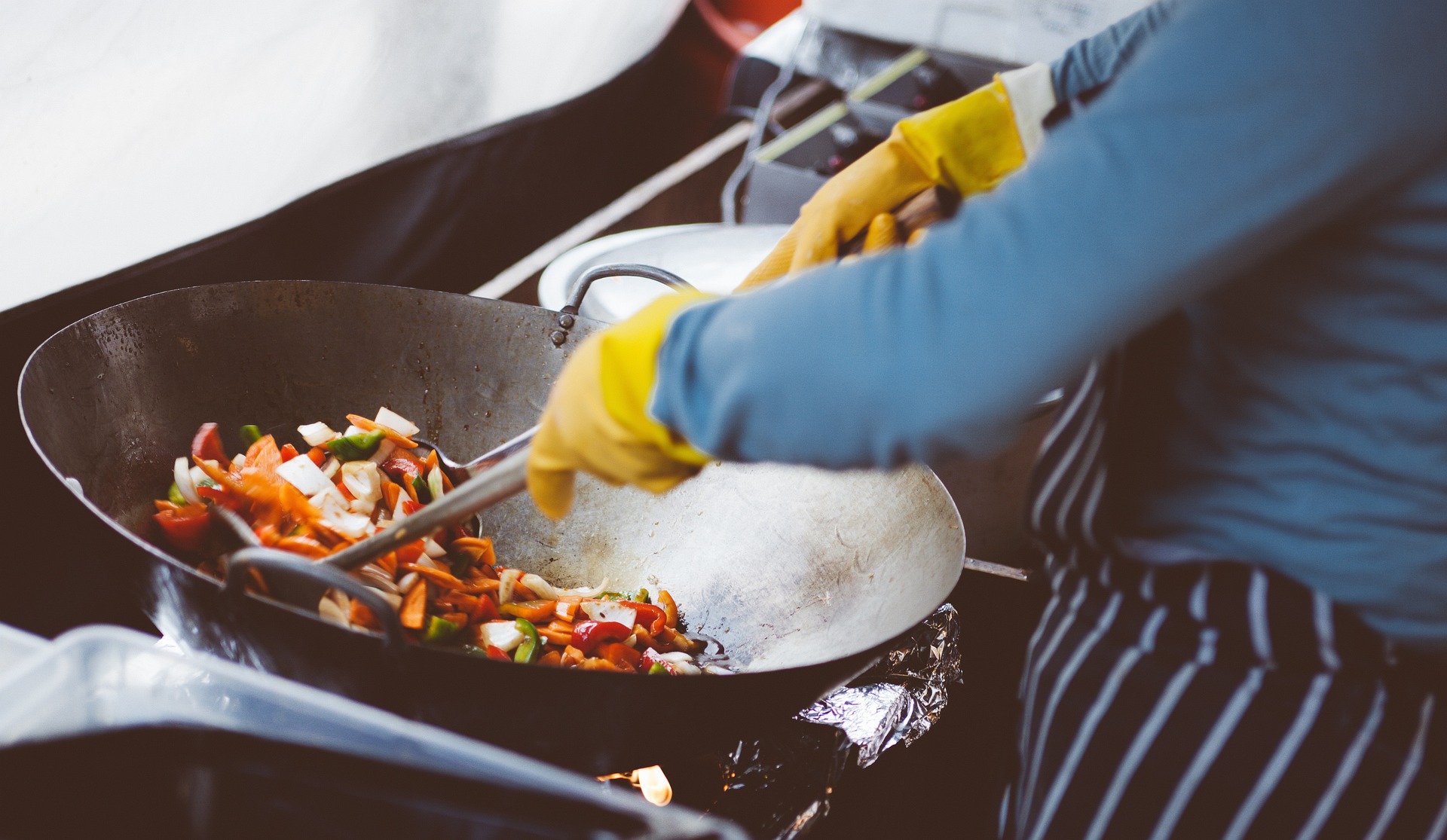Sizzling Secrets: The Art of Wok Cooking
Forget everything you thought you knew about stir-frying. Welcome to the world of wok cooking, where fire meets finesse and flavors dance in a smoky swirl. This ancient Chinese cooking method is not just about tossing ingredients in a pan; it's a culinary art form that's taking modern kitchens by storm. From street food stalls to Michelin-starred restaurants, the wok is the unsung hero of Asian cuisine, and it's time you mastered its secrets.
But what really makes wok cooking special is the concept of ‘wok hei’ – literally translated as ‘breath of the wok’. This elusive quality refers to the smoky flavor and aroma imparted to food when cooked at high temperatures in a well-seasoned wok. It’s the holy grail of Chinese cooking, a combination of technique and timing that transforms simple ingredients into extraordinary dishes.
The Heat is On: Mastering Wok Temperature
Temperature control is the key to successful wok cooking. Unlike Western cooking methods that often use moderate heat, wok cooking thrives on high temperatures. This intense heat is what gives stir-fried dishes their characteristic texture – crisp yet tender vegetables, meat that’s seared on the outside but juicy within.
But it’s not just about cranking up the heat and hoping for the best. Successful wok cooking requires understanding how to manage the heat zones within the wok. The bottom is the hottest part, perfect for searing meats or caramelizing aromatics. The sides are cooler, ideal for pushing ingredients that are done cooking or need less heat.
This heat management is a dance, requiring constant movement of both the food and the wok itself. It’s this dynamic cooking process that gives wok-cooked food its unique texture and flavor profile.
Wok This Way: Essential Techniques
Mastering wok cooking is all about technique. The most basic and essential skill is stir-frying, which involves quickly cooking small pieces of food over high heat while constantly stirring. But there’s more to it than just moving food around.
‘Bao’ is a technique where ingredients are tossed in the air and caught back in the wok. This not only looks impressive but also ensures even cooking and prevents sticking. ‘Chao’ involves pushing food up the sides of the wok, allowing excess oil to drain back to the bottom.
Another crucial technique is ‘adding oil around the edge’. This involves drizzling oil around the top edge of the wok, allowing it to heat as it runs down the sides. This not only adds flavor but also creates a non-stick surface and helps achieve that coveted wok hei.
From Market to Wok: Choosing the Right Ingredients
The beauty of wok cooking lies in its versatility – almost anything can be cooked in a wok. However, choosing the right ingredients is crucial for creating balanced, flavorful dishes. Traditional Chinese stir-fries often combine a protein (meat, seafood, or tofu) with vegetables and aromatics like ginger, garlic, and scallions.
When selecting vegetables for stir-frying, opt for those that cook quickly and retain their crunch. Bok choy, bell peppers, snap peas, and bean sprouts are all excellent choices. For proteins, consider cutting them into uniform, bite-sized pieces to ensure even cooking.
Don’t forget about sauces and seasonings. Light soy sauce, dark soy sauce, oyster sauce, and rice wine are staples in wok cooking. These ingredients, when combined with the high heat of the wok, create complex flavors that elevate simple ingredients to new heights.
Beyond Stir-Fry: Expanding Your Wok Repertoire
While stir-frying might be the most well-known wok technique, this versatile tool can do so much more. Deep-frying in a wok is a revelation – the sloping sides make it easy to use less oil while still achieving perfectly crispy results. Try your hand at wok-fried chicken wings or tempura vegetables for a crispy treat.
Steaming in a wok is another technique worth exploring. By using a bamboo steamer basket, you can create delicate dumplings, fluffy bao buns, or perfectly cooked fish. The wok’s shape allows for even steam distribution, resulting in perfectly cooked food every time.
For the adventurous cook, try wok smoking. By lining the wok with foil and using tea leaves, rice, and sugar as a smoking mixture, you can impart delicate smoky flavors to everything from chicken to cheese.
Wok Wisdom: Tips and Tricks
-
Always preheat your wok before adding oil to prevent sticking
-
Cut ingredients into uniform sizes for even cooking
-
Have all ingredients prepped and ready before you start cooking
-
Use oils with high smoke points like peanut or grapeseed oil
-
Don’t overcrowd the wok – cook in batches if necessary
-
Keep your wok moving to prevent hot spots and ensure even cooking
-
Season your wok regularly to maintain its non-stick properties
-
Invest in a good wok spatula (wok chuan) for easy tossing and stirring
Wok and Roll: Embracing the Wok Lifestyle
Mastering wok cooking is more than just learning a new technique – it’s about embracing a whole new approach to cooking. The wok’s versatility, efficiency, and ability to create complex flavors with simple ingredients make it a valuable addition to any kitchen.
As you delve deeper into the world of wok cooking, you’ll discover that it’s not just about following recipes, but about understanding the principles of heat, timing, and balance. With practice, you’ll develop an intuition for wok cooking that will allow you to create your own unique dishes.
So fire up that wok, embrace the sizzle and smoke, and get ready to embark on a culinary adventure that will transform your cooking forever. The art of wok cooking awaits – are you ready to master it?






